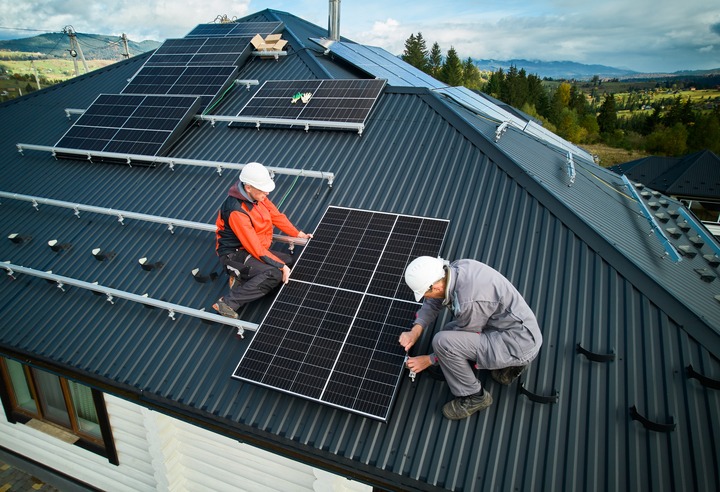Solar energy is more appealing than ever in a time when eco-conscious living and sustainability are key themes. Being able to produce clean, renewable energy from your house is a realistic step toward energy independence as well as an environmental statement, making home solar panels a necessity rather than a trend. Installing residential solar panels has grown in popularity as a way for homes to lower their carbon footprint and save money on power costs for a lifetime.
Installing solar panels could seem like a difficult task at first, regardless of your motivations—embracing green energy or long-term financial gains, for example. But with the correct direction and comprehension, it turns into a manageable and worthwhile undertaking.
Today, we will help you to understand how you can install solar panel system for home easily and conveniently.
Here are a few steps you need to go through to install a solar panel system for home:
Examine your electricity bill & energy efficiency
Examining your power bill is the first thing you should do before beginning the solar panel installation procedure. You may estimate your monthly use in kWh by glancing at your electricity bill. You will use this figure to determine the size of your residential solar panel system because the amount of energy you consume will determine the quantity of solar panels you need.
Make a budget calculation
You can estimate the cost of installing solar energy in your house or place of business based on the monthly energy use that is displayed on your electricity bill. It is possible to calculate the typical cost required for the home solar panel installation process based on your energy use.
Evaluate Your Solar Energy Optionality
If you want to go solar, you no longer have to limit yourself to buying and building a system that you completely own and maintain. Numerous schemes will let you make use of solar electricity even if you rent your house or decide against buying a rooftop system.
Here are a few possibilities for solar panel system for homes; to find out about programs in your region, contact your utility company and local installers.
- Purchasing a residential solar panel system
- Community or shared solar
- Solar Leases
- Power Purchase Agreements or PPA
- Solarize Programs
Collaborate with Your Utility and Installer
In the event that you choose to build a home solar panel energy system, your installer needs to be able to assist you with completing the required paperwork and permits. The right size for your system will be decided by your installation. In addition to your electrical demands, the following factors will determine the size:
- The solar resource or sunshine available at the location
- The tilt and orientation of the system
- The effectiveness of the system in producing power from sunlight
- Other electrical sources include a utility, a wind turbine, or a fossil fuel generator.
Additionally, your home solar panel installer will make sure that every piece of equipment is installed with the proper orientation and tilt to maximize the daily and seasonal solar energy your system receives and produces. Make sure you comprehend the invoicing and net metering procedures, in addition to any additional costs associated with using the utility.
Once you finalize your residential solar panel installation company, all the other steps like site inspection, facility design, and granting the energy concessionaire authorization among others are done by the professionals appointed only.
Inspection of the dealership
The concessionaire’s examination is the final stage in the process of installing solar panel system for homes before using photovoltaic solar energy. Electric company technicians visit the installation site to verify that the system was implemented appropriately and to give the all-clear to begin using it. In the process, a bidirectional model is installed or swapped out for the existing meter. This model calculates the daily energy consumption and injection into the network on the property, enabling the utility to issue energy credits.

